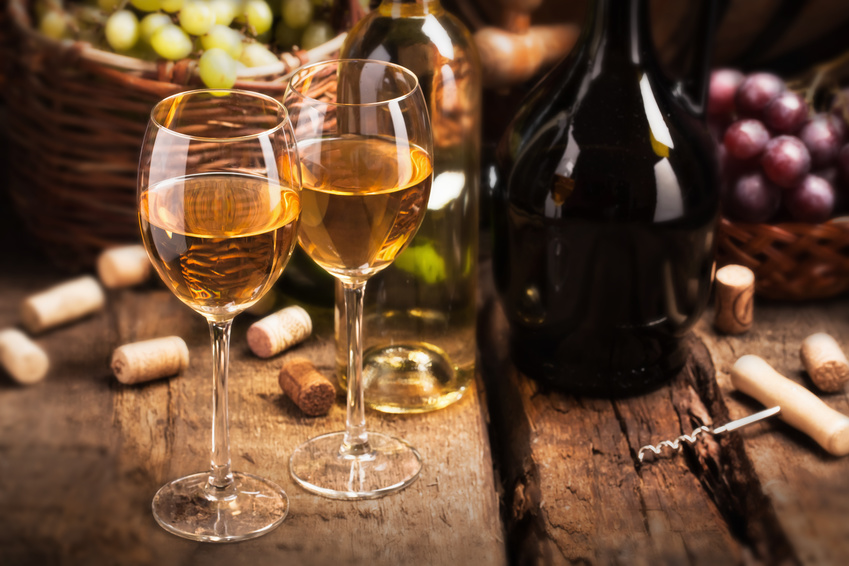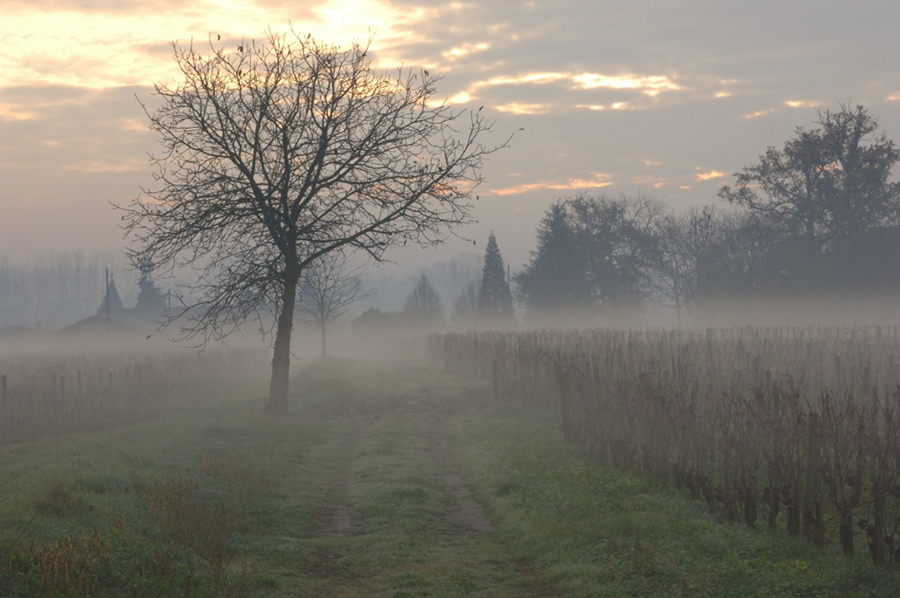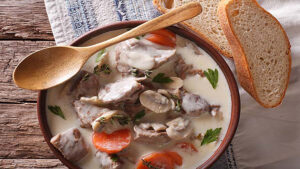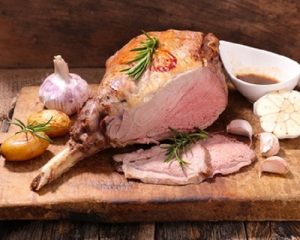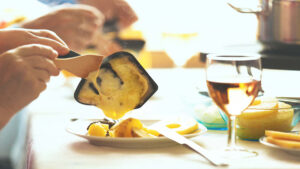With their luscious golden colour, sweet white wines are the perfect accompaniment for festive meals, cheese and desserts. The best nectars are made from grapes affected by the famous “noble rot”, born of a magical encounter between fruit, terroir and humans. Today, iDealwine takes a look at the crown jewel of the wine world.
Nectar, magic, alchemy, meditative wines… The words producers and connoisseurs of sweet whites use to describe them show that these wines are in a class of their own. “I cannot be compared. I am the wine of the wind and the spirit” declares the label on a “Vin d’Autan”, produced in Gaillac by Robert Plageoles. Everything combines to make these wines the drink of the gods and to elevate the mind: the complexity of aromas and quintessential grape; the intense minerality of a Layon; the perfect smokiness of a Sauternes capturing “all the fires of the Bordeaux summer”, as the writer François Mauriac so prosaically put it. Then there is the magical balance of acidity and sweetness and the unending floral finish. “These are the wines of meditation” Jean-Michel Deiss would no doubt add. However, far from being a technical product involving all the winemaker’s expertise, sweet white wine is the outcome of an encounter between winemakers and their terroir, humans and a grape.
The term “sweet white” is generally understood to mean wines with residual sugars although it actually covers a wider range of wines. All categories of sweet white wine combined represent a tiny proportion of France’s appellation controlée production (a little more than 1%). Of the sweet whites, botrytised wines stand out as they are not just a product of over-ripened fruit or grapes concentrated purely by the wind and sun. The grapes used in these wines have fallen prey to the decay and rot of a microorganism, Botrytis cinerea. It takes a combination of grapes grown in specific soil conditions, precise and demanding human input and sometimes luck to take Botrytis to another level and to create an extraordinary wine. The action of Botrytis cannot be summarised as simply concentrating the grape juice. As it grows, this microorganism completely changes the grape, especially aromatically. A botrytised wine is not “sweetened dry” wine. With Botrytis, there is a magical transformation and the wine moves on to another plane. This rare quality can be measured. With a Botrytis affected grape, the loss of juice is estimated to be at least 65% compared to a ripened, “healthy” grape. By necessity, these wines are therefore rarities.
In France and Europe there are a number of areas where Botrytis works its magic. All connoisseurs will recognise the names of Sauternes, Coteaux du Layon, Bonnezeaux, Quart de Chaume, Condrieu, Alsace and Gaillac in France alone. Then of course there are the many vineyards in Germany, Austria and Hungary.
To thrive, noble rot requires a combination of specific conditions (soil, microclimate, exposure, grape variety). When the climatic conditions for the year and the winegrower’s preparations allow, Botrytis grows in the best possible way, creating perforations in the skin of the grapes. In dry weather, water evaporates through these miniscule openings and the grapes shrivel. Sugars, some acids and other molecules become more concentrated. The grape is described as “rôti” (literally, roast) and is ready for harvesting. Noble rot is therefore the result of a dynamic between the growth of Botrytis and concentration within the grape berry due to evaporation. The process is very delicate however. If the grapes have not been dried rapidly by wind and heat by the time the first rains fall, everything can go wrong and in damp conditions the fungus will develop into grey rot.
The magic of the best sweet white wines however lies in their outstanding aromatic properties rather than their residual sugars. A botrytised grape is a shrivelled grape with a high sugar concentration. But more importantly, it combines the aromas brought about by the noble rot (dried fruit, spices, lime flower, chamomile, black tea, quince, apricot) with a concentrated expression of the terroir where it was grown. The quality of the wine also depends on the quality of the harvest. This involves successive “siftings” (picking the grapes in several stages) so that only the best clusters, partial clusters and even individual grapes are selected. The fruit must only be affected by noble rot and cannot show any trace of grey mould (which gives a strong iodised taste). For this reason, artificial enrichment and concentration processes could never replace the encounter between human input and nature’s magic. Artificial process primarily refers to chaptalisation. Between grapes picked at 20° potential through natural concentration and grapes picked at 17.5°, the quantity of juice obtained doubles! Add to this the 8.5 kg of sugar legally permitted to reach 20° and you have 205 litres. In view of this, some temptations are understandable. And given the lax specification applied to some appellations (including the most prestigious) unfortunately it must be recognised that a good majority of sweet white wines are chaptalised and even over-chaptalised.
In Germany, a country well known by wine lovers for producing good quality sweet whites (along with Hungary and Austria), the laws recognise that the more a wine is concentrated by Botrytis, the lower the alcohol content. This is an indisputable oenological truth. The low alcohol content in these wines (just 8° more often than not), is balanced by their body, aroma and acidity. In France however, alcohol rules and the appellations generally set a minimum content for these wines even though this is absurd (and encourages deception). As long as “enriched” sweet white wines continue to dominate the French market, the image of these wines will be tarnished and the vast majority of connoisseurs will struggle to appreciate the true nature of “natural” sweet whites. This explains many of the commercial difficulties producers of sweet wines face in France, including the most prestigious names.
The trend today is to limit sugar in some appellations (notably the Loire) without prohibiting it (the law simply forbids exceeding 15° through chaptalisation). Other enrichment techniques such as reverse osmosis (removing water in the grape must) and cryoextraction (concentration through freezing) are still permitted even though they are a little more controlled. So why not go as far as prohibiting these devaluing practices? This is already the case with late harvest and Sélection de Grains Nobles wines in Alsace. The Sauternais region, for example, still authorises sugar enrichment (with the same limits as in the Loire) and artificial concentration, but would certainly benefit in terms of quality and “clarity” for consumers.
High-quality sweet whites made from perfectly botrytised grapes are the ultimate sumptuous and complex wine, especially if they are kept for 15 to 35 or even 40 years (or longer for the best vintages). These wines have a rather specific purpose at the table. Many wine lovers enjoy drinking them on their own as a dessert or large digestif. We particularly like this option at iDealwine! However, aside from the classic pairings of a foie gras or Roquefort (or any blue veined cheese), why not surprise yourself and try a Coteau du Layon with sweetbread, Gewurztraminer Late Harvest with an exotic spicy dish such as curry, or Sauternes with diced pineapple lightly roasted in butter? Sweet whites also go well with lobster or crawfish in a sauce, scallops on a bed of pan-fried button mushrooms or more generally with most spicy Thai and Indian dishes. Other possible pairings include sole with morel mushrooms in a Sauternes sauce, capon (or poularde) with a raisin stuffing deglazed in Sauternes (or a Loire sweet white), not forgetting the many apple, pear and apricot-based desserts. Because at the end of the day, meditative wine or not, sweet whites, like other wines should first and foremost be enjoyed at the table!
Thank you to Coteaux du Layon winegrower Patrick Baudouin, whose thoughts have fed this article.
See all Sauternes on the en Primeur website
Check out our Sauternes currently on sale
Shop the Coteaux du Layon currently on sale

